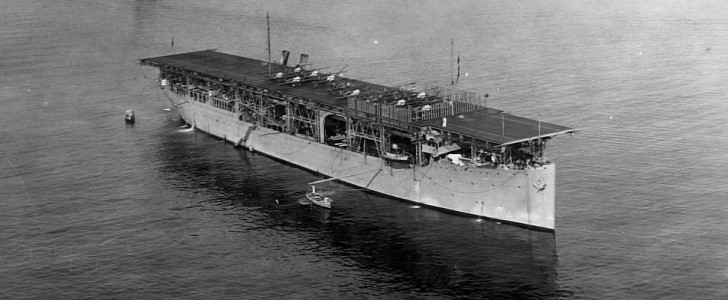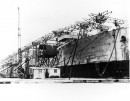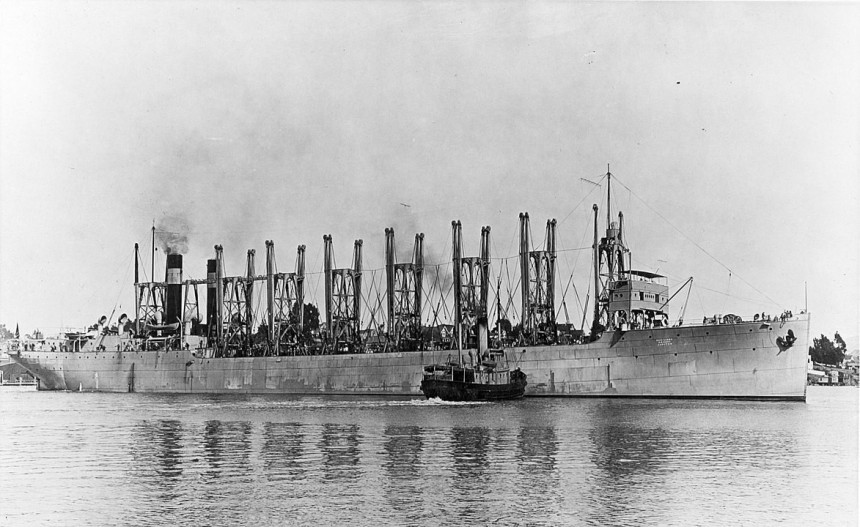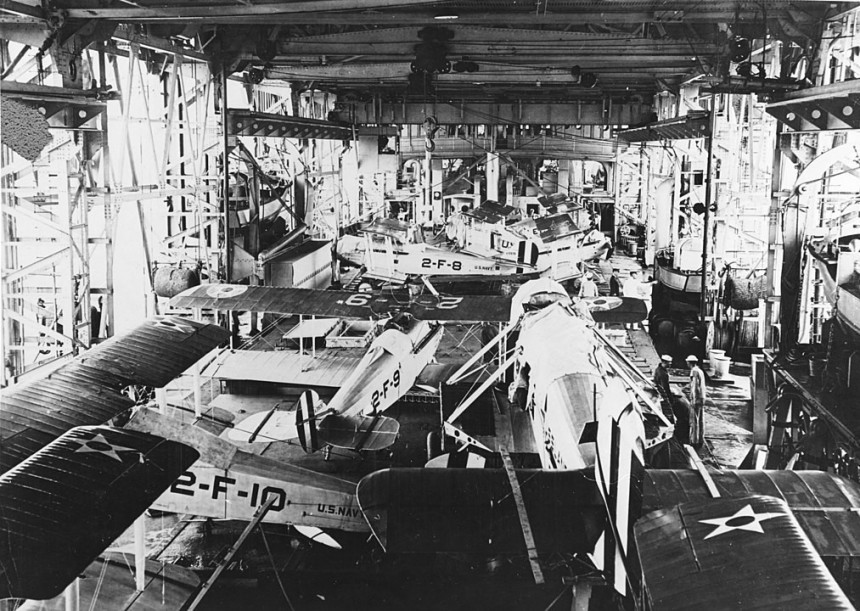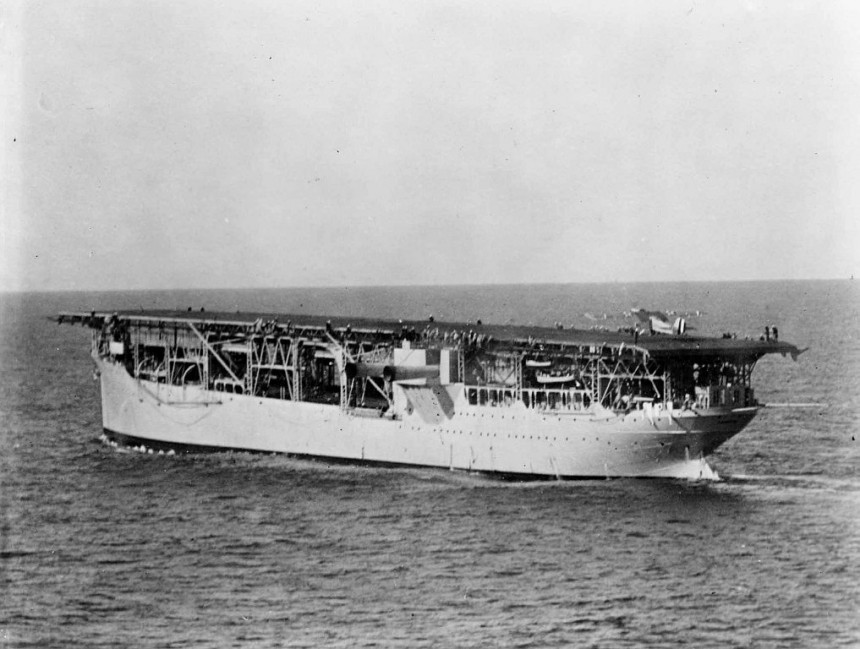Aircraft carriers are synonymous with strength, power, and the ability to wield them anywhere in the world. But it wasn't always this way. There was a time when carriers were little more than cargo ships with slabs of wood nailed to the top.
It may not have been all that impressive, but the USS Langley, America's first converted aircraft carrier, would define American naval doctrine for the next century. It's an anniversary the noble American ship celebrates this year.
In honor of the men and women who served aboard this historic ship, let's take a look back at some of the highlights of its remarkable but short career. Unlike most American warships, USS Langley went through about as many evolutions as the average Pokémon.
The first and by far the most humdrum and dreary assignment under its belt came upon the day of its launch, August 14th, 1912, an occasion attended by the sitting United States President William Howard Taft. It was upon launch that the ship then christened the USS Jupiter that it took the role of a lowly Proteus class collier, a type of bulk cargo ship.
Interestingly, this class of collier is most notable for being the first U.S. warships to feature a turbo-electric transmission powerplant courtesy of General Electric. As well as for having the bulk of the fleet lost in and around the area we know as the Bermuda Triangle.
These include USS Cyclops, USS Proteus, and USS Nereus. As for the Jupiter, it served admirably during the First World War. Carrying soldiers, vehicles, and even aircraft to the war's western front.
But it wouldn't be until after the war that this ship would take its historic new role. Authorized by the Navy on July 11th, 1919, the Jupiter sailed to the Norfolk Naval Shipyard of Portsmouth, Virginia. There it was refitted with the world's first purpose-built carrier flight deck.
As wood was the most abundant material available in the early 1920s, it and a bare minimum of steel reinforcement constituted its construction. While at Portsmouth, the ship was rechristened the USS Langley.
In Honor of Samuel Pierpont Langley, a contemporary of the Wright Brothers who very nearly beat the Wright Brothers to the title of the first man in the air. His iconic Aerodrome is still in the Smithsonian Institution's collection to this day.
By March 1922, the USS Langley was ready to sail once more. Given the hull number CV-1, a Vought VE-7 "Bluebird" took off from Langley's deck on October 17th, 1922, with Lt. Virgil C. Griffin behind the controls.
From there, the ship toured the waters of North America on a publicity tour for the U.S. Navy in the winter of 1923. For the next 12 years after 1927, the ship was stationed out of California and Hawaii on and off.
By 1936, the ship was back in dry dock in California to be refitted as a seaplane tender. Thus ending the aircraft carrier career for the ship, but the twilight of the ship with more lives than most alley cats was still to come.
At the outset of the U.S. entering the Second World War after the Japanese attack of Pearl Harbor, USS Langley away from the fray, at a dock in the Philippines. Far off from the chaos unfolding on American territory many miles away.
The subsequent invasion of the islands by Imperial Japanese airpower forced the ship to flee to the Dutch East Indies, where it became a key part of the American-British-Dutch-Australian Command (ABDACOM) naval forces in the region. The ship continued to bring the fight to the enemy into the winter of 1942. On one fateful day, February 27th, 1942. the ship was intercepted by a fleet of over a dozen Imperial Japanese Mitsubishi G4M "Betty" bombers.
The attack rendered the prized American ship dead in the water. At just past noon on that same day, the orders were given by the captain to abandon the ship. The mighty Langley went to its grave that afternoon, scuttled before it could be captured by the enemy.
Only 232 men survived the attack, with many more killed when the USS Pesos rescue ship was sunk by Japanese torpedos. Though the USS Langley's career as an aircraft carrier was short, it proved the concept of a mobile command center from which Navys could launch aircraft was, in fact, possible and practical.
All valuable information for the next round of American carriers, the Saratoga and Lexington. Both of which were commissioned in direct response to the lessons learned on the Langley. The rest, as they like to say, is just history.
Check back for more military vehicle profiles and so much more here on autoevolution.
In honor of the men and women who served aboard this historic ship, let's take a look back at some of the highlights of its remarkable but short career. Unlike most American warships, USS Langley went through about as many evolutions as the average Pokémon.
The first and by far the most humdrum and dreary assignment under its belt came upon the day of its launch, August 14th, 1912, an occasion attended by the sitting United States President William Howard Taft. It was upon launch that the ship then christened the USS Jupiter that it took the role of a lowly Proteus class collier, a type of bulk cargo ship.
Interestingly, this class of collier is most notable for being the first U.S. warships to feature a turbo-electric transmission powerplant courtesy of General Electric. As well as for having the bulk of the fleet lost in and around the area we know as the Bermuda Triangle.
But it wouldn't be until after the war that this ship would take its historic new role. Authorized by the Navy on July 11th, 1919, the Jupiter sailed to the Norfolk Naval Shipyard of Portsmouth, Virginia. There it was refitted with the world's first purpose-built carrier flight deck.
As wood was the most abundant material available in the early 1920s, it and a bare minimum of steel reinforcement constituted its construction. While at Portsmouth, the ship was rechristened the USS Langley.
In Honor of Samuel Pierpont Langley, a contemporary of the Wright Brothers who very nearly beat the Wright Brothers to the title of the first man in the air. His iconic Aerodrome is still in the Smithsonian Institution's collection to this day.
From there, the ship toured the waters of North America on a publicity tour for the U.S. Navy in the winter of 1923. For the next 12 years after 1927, the ship was stationed out of California and Hawaii on and off.
By 1936, the ship was back in dry dock in California to be refitted as a seaplane tender. Thus ending the aircraft carrier career for the ship, but the twilight of the ship with more lives than most alley cats was still to come.
At the outset of the U.S. entering the Second World War after the Japanese attack of Pearl Harbor, USS Langley away from the fray, at a dock in the Philippines. Far off from the chaos unfolding on American territory many miles away.
The attack rendered the prized American ship dead in the water. At just past noon on that same day, the orders were given by the captain to abandon the ship. The mighty Langley went to its grave that afternoon, scuttled before it could be captured by the enemy.
Only 232 men survived the attack, with many more killed when the USS Pesos rescue ship was sunk by Japanese torpedos. Though the USS Langley's career as an aircraft carrier was short, it proved the concept of a mobile command center from which Navys could launch aircraft was, in fact, possible and practical.
All valuable information for the next round of American carriers, the Saratoga and Lexington. Both of which were commissioned in direct response to the lessons learned on the Langley. The rest, as they like to say, is just history.
